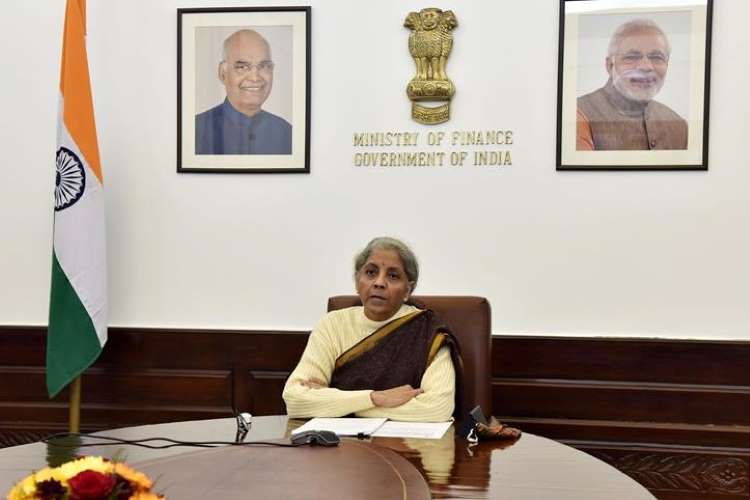
The Union Budget of 2021 is unlike any other in recent history. Finance Minister Nirmala Sitharaman will present the Narendra Modi government’s eighth budget amid the Covid-19 pandemic and the unprecedented economic crisis triggered by it. The economic growth is at the worst level since independence. But there is a lot to hope for the country with around 66 crore citizens below the age of 25. A young population also means that employment generation is the highest priority for the government.
An appropriate growth trajectory has to be achieved to generate employment for its young population. It is important that the young population is engaged physically in production of goods and services, and not just supported on unemployment benefits, as unutilized minds and bodies can lead to unsocial behaviour. To revive the economy, certain sectoral stimulus needs to be injected with laser beam accuracy. The Budget 2021 is the vehicle to deliver the stimulus and ensure optimal utilisation of available resources, both capital and labor. Here are some suggestions how the finance minister could do it.
READ I Budget 2021: Nirmala Sitharaman should build on these three pillars
Permanent fiscal committee
In India, the probability of complex fiscal issues emerging regularly can be high, especially in 2021. Tax collections may not be adequate, given the Covid-19 pandemic. There are also problems as far as tax rates during a pandemic. There could be problems in terms of refunds and reimbursement as well as inter-state disputes on tax collection and distribution.
It would be appropriate for the government to consider setting up of permanent finance commission or a permanent budgetary office that takes care of the issues that keep emerging. Instead of the finance ministry itself facing these challenges, it would be appropriate to have a buffer institution like a permanent commission, appropriately empowered to intervene and take decisions.
Further, as the monetary policy committee of the Reserve Bank meets regularly and makes recommendations on interest rates, the government could consider having a fiscal policy committee (FPC) comprising external as well as internal (from within ministry of finance) members. The FPC could bring fresh ideas to fiscal policy, audit the decisions within the ministry, and contribute to in-house policy formulation. The FPC can meet regularly to address fiscal issues and set an example for the state governments to follow.
READ I Union Budget 2021: Seven ideas to transform Indian agriculture
Separating debt from monetary management
The Covid-19 pandemic has heavily impacted the global economy. Public debt across the world has increased substantially and the strains of such debt are becoming more and more visible. In India also, the fiscal deficit has widened significantly and public debt is expected to increase substantially in line with the global trend. All levels of government, Centre, state and local bodies are expected to borrow more from the public.
It is recommended that public debt management function should be separated from monetary policy. This will help to focus more on rising debt in terms of how it will be incurred and what share will go different levels of government. A focused study must be carried out to establish timelines for refinancing risks. By having a separate debt management body, the government minimise the cost of borrowing without any conflict of interest with interest rate fixed function of the RBI.
READ I Budget 2021: Strategic imperatives for defending a $5 trillion economy
National institute of NBFCs
The Reserve Bank of India is one of the most reputed financial regulators in the world. India’s financial markets are well regulated, consisting of supervised commercial banks. Banks need to ensure that money reaches the people so that capital and labour can come together to produce output. In India, the non-banking financial companies (NBFCs) play the important role of offering the last mile connectivity, especially for the micro, small and medium enterprises (MSMEs).
Unfortunately, this is the area where the country’s financial markets are falling short. Most NBFCs are operating in the private sector. They have helped a great deal in the country achieving financial inclusion. They actively participated in retail banking, especially in supporting MSMEs. But given their past performance and recent failures, their credibility has suffered. India has over 10,000 NBFCs. With the technological revolution underway, especially in the financial sector, most NBFCs are not prepared for the challenge. In India, NBFC assets account for nearly 13% of the total finance; whereas in the US, assets of shadow banks are regulated well by the commercial banks.
There is a clear and present need to strengthen NBFCs. A national institution must be established on the lines of the National Institute of Banking Management and College for Agriculture Banking for commercial and cooperative banks, respectively. This institute will provide research support and training to staff. The institution will also help identify a roadmap and role for NBFCs in making India a $5 trillion economy.
READ I Covid-19 vaccine: Fast action, caution can save lives
Dispute resolution commission
The Narendra Modi government is known to take tough decisions. The decisions may not necessarily be appropriate for all segments of the society and disputes can emerge. Hallmark of a functioning democracy is that disputes emerge and then are amicably settled. Where difficult reforms are on the anvil, the government could set up a dispute resolution commission (DRC).
The commission will help Parliament prepare legislations and in case of disputes, it could intervene and resolve the issues. The composition of DRC can be decided by the government, but it needs to have senior functionaries to inspire confidence among the disputing parties. Therefore, it should be chaired by a person of eminence like a retired Supreme Court judge. The DRC should have 51 eminent members, from all walks of life, including 29 political representatives, preferably chief ministers.
READ I A ticking time bomb: Tackling India’s mental health crisis
Focus on mental health
Mental health is one area in which attention needs to be provided post Covid-19. The lockdown has lasted for nearly a year for schools, colleges and universities. It has left a scar on the minds of students and young people waiting to join the workforce as well as the elderly. In India, the size of the house is generally small and therefore the family dynamics would have changed with the lockdown.
Several families would be facing unemployment and poverty. In such circumstances, the most vulnerable in the family would suffer the most. The vulnerable could be the elderly, the housewife or young children. The scars that have been left behind would have resulted in many difficult situations, which could have also resulted in anxiety, depression and suicidal tendencies.
While the government is planning the vaccination, which is mainly for physical health, the mental health aspect seems to have been neglected. It would be helpful if the government considers appropriate measures for mental health. It is time that mental health institutions came up across the country, with their headquarters in every state as state circumstance would be different. Therefore, the government in the budget should consider establishing such institutions, undertaking research on such issues, both sociological and psychological.
READ I Financial inclusion: Some steps to give farmers access to funds
LTC scheme for pensioners
To revive the economy and to create demand, the government could consider LTC scheme for pensioners. The government has been encouraging travel and tourism for salaried people, but the scheme never yielded results. The elderly pensioners, who have been caged in their houses for nearly a year, would like to go on pilgrimages.
Instead of spending money on LTC, Budget 2021 could have a scheme wherein the pensioner can travel to tourist places, with up to a month’s pension eligible for text benefits. So, there is no outgo of resources from the government though there is some tax foregone. The overall results could be encouraging with increasing number of pensioners encouraged to travel giving a boost to ravel and hospitality sectors.
READ I Farmers protest: Is contract farming a bad thing for farmers?
Reverse mortgage schemes
The government has been attempting to generate demand in the economy and reverse mortgage could be of some help in that endeavor. To revive the economy, it will be helpful to monetise the housing stock. In India many elderly people live in houses, but they are not having enough cash and they can’t sell the house either because that is the only asset they have. The reverse mortgage market never developed in India, mainly for emotional reasons and never took-off in any part of the country, despite the provision being available with the banking sector. Budget 2021 can announce attractive reverse mortgage schemes to monetise the assets and raise revenues.
The government could help in ensuring that the reverse mortgage market improves and in the reverse market, the elderly people at least for last 15-20 years of their lifetime, have a secured flow of cash. To incentivise the development of the housing reverse mortgage market, the government may like to engage the Reserve Bank of India, commercial banks, National Housing Bank and housing finance companies.
Monetizing the stock of unused houses
There are large stocks of houses that are lying locked as second or third investment by investors in real estate. The owner is risk-averse and generally scared of renting a house that the house may get be returned. To inspire confidence, it may be appropriate that the government can institute a special purpose vehicle, which can take over houses that are lying locked and use them for rental purposes under their supervision. This will help in reviving the confidence of the owner in renting the house and cash flow would start to revive demand.
The owners recovering the rent will have more purchasing power which can be used in buying material for housing and real estate. The renters will have to pay a little less rent because the proposed special purpose vehicle would absorb the risk, scrutinise the renter, provide guarantee to the owner, and therefore it will help revive the economy. Budget 2021 can attempt monetisation of unsold housing inventory and unused house to have a new revenue stream.
Zero interest rate loans on EWS/LIG housing
The economy is in bad shape and some out of the box steps would be needed for about two years till the economy recovers. The housing sector is the one that has maximum forward and backward linkages, interconnected with nearly 275 industries. The government can consider zero interest loans for the next two years to the economically weaker sections (EWS) and low-income group (LIG) housing. The interest compensation can take place through direct benefit transfer (DBT) on registration of the completed house to avoid any misuse or diversion of resources.
To conclude, Budget 2021 is a landmark budget that would aim to put the Indian economy back on high growth trajectory. Therefore, policy initiatives in the Budget need to ensure that government expenditure will lead to the optimal use of labour and capital to revive the economy, hit hard by the Covid-19 pandemic.
(Dr Charan Singh is CEO and director of EGROW Foundation, a Noida-based think tank. Views are personal.)
Dr Charan Sigh is a Delhi-based economist. He is the chief executive of EGROW Foundation, a Noida-based think tank, and former Non Executive Chairman of Punjab & Sind Bank. He has served as RBI Chair professor at the Indian Institute of Management, Bangalore.

